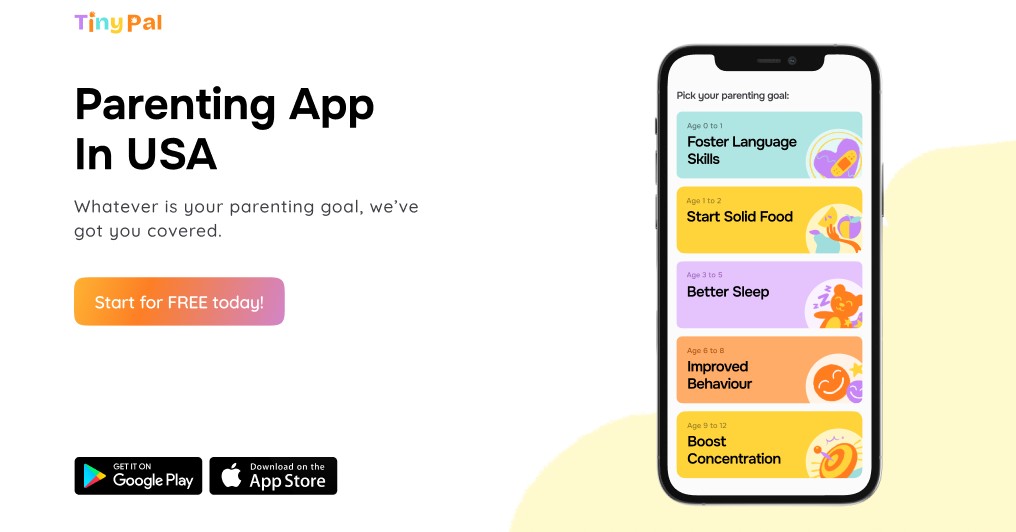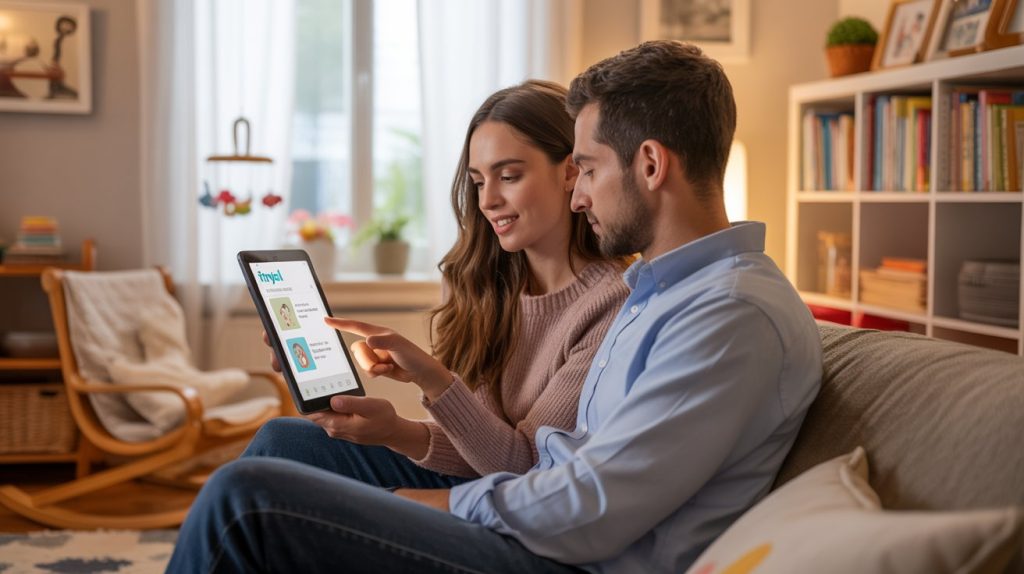Table of Contents
Healthy Screen Habits for Kids in the USA: A Parent’s 2025 Guide
Why Screen Time Feels Impossible to Control
It’s Friday evening in Chicago. You’ve cooked dinner, but your 6-year-old won’t come to the table — they’re glued to YouTube. Meanwhile, your teenager is gaming online with friends, headset on, ignoring curfew.
If this sounds familiar, you’re not alone. Across the USA, parents struggle with the same questions:
- How much screen time is too much?
- Should I ban screens at bedtime?
- How do I stop tantrums when I turn devices off?
- Are parenting apps really helpful for digital balance?
The truth? Screens are part of childhood in 2025 — but without healthy boundaries, they can overwhelm kids’ sleep, emotions, and behaviour.

The State of Screen Time in the USA
According to the CDC, American children spend an average of 4–6 hours daily on screens outside of school. For teens, that number can exceed 7+ hours.
The American Academy of Pediatrics (AAP) recommends:
- Ages 2–5: No more than 1 hour daily.
- Ages 6–12: Consistent family limits, balanced with activity and sleep.
- Teens: No screens in bedrooms, and limits around bedtime.
Yet surveys show that 67% of US parents feel they have “lost control” of screen time at home.
Clearly, American families need support — not just guidelines, but practical strategies.
Why Healthy Screen Habits Matter
Too much screen time can lead to:
- Sleep problems: Blue light and overstimulation delay bedtime.
- Behavioural struggles: Tantrums when devices are removed.
- Physical inactivity: More time sitting = less time moving.
- Family disconnection: Less face-to-face interaction at meals or outings.
Balanced screen use, on the other hand, promotes:
- Digital literacy: Kids learn online safety.
- Emotional regulation: Devices don’t become the only coping tool.
- Family connection: Shared rules = fewer battles.
Common Challenges US Parents Face
- The Dinner Table Fight: Kids refusing to put down screens during meals.
- The Bedtime Battle: Toddlers and teens both resisting device shut-off.
- Public Tantrums: Young children screaming when tablets are taken away at restaurants or stores.
- Peer Pressure: “All my friends have more screen time than me!”
Sound familiar? These struggles are universal — but solvable.

Practical Strategies for Healthy Screen Habits in the USA
1. Set Family Screen Agreements
Instead of sudden bans, agree on rules together. Example:
- No phones at dinner.
- No devices in bedrooms after 9 pm.
- Weekends = limited gaming hours.
👉 Families who co-create rules see fewer arguments.
2. Stick to Predictable Routines
Bedtime, mealtimes, and homework go smoother when kids know the pattern.
- Example: “After homework, 30 minutes of tablet time, then outdoor play.”
Routine = fewer tantrums.
3. Create Tech-Free Zones
The AAP recommends device-free bedrooms and dinner tables.
- Why? It prevents late-night scrolling and encourages family bonding.
4. Model the Behaviour You Want
Children mirror parents. If you check email at dinner, they’ll want devices too.
Set your own “phone-free” windows to reinforce habits.
5. Offer Alternatives, Not Just “No”
Replace devices with activities:
- Walks, board games, or art supplies.
- Family cooking or storytelling.
Kids say “yes” more when there’s another choice.
6. Use Parenting Apps to Support You
Managing screen time alone is overwhelming. That’s why many US families use parenting apps.
TinyPal Parenting App helps by:
- Creating custom screen time schedules aligned with AAP recommendations.
- Providing scripts for tantrums when devices are turned off.
- Offering positive discipline playbooks for calmer limits.
- Tracking family balance (digital vs offline time).
👉 Download the TinyPal Parenting App — the #1 parenting app in the USA for screen time and toddler routines.
Real-Life Example: A New York Family
Jessica, a mum of two, struggled with:
- A 5-year-old who threw tantrums when the iPad was taken away.
- A 10-year-old sneaking devices into bed.
After using a parenting app, she introduced:
- 8:30 pm screen cutoff.
- Choice-based discipline (“You can use the iPad now or after snack”).
- Daily reminders for screen-free dinner.
Result? Better sleep, fewer tantrums, calmer evenings.
Her words: “The app gave me scripts when I felt lost. It turned fights into teamwork.”

FAQs: Screen Time in the USA
Q1. How much screen time is safe for US kids?
The AAP recommends toddlers have no more than 1 hour/day, while older children should have structured limits.
Q2. Should I ban screens completely?
No. Experts say bans fuel rebellion. Balanced rules and consistency work better.
Q3. Can apps help parents manage screen time?
Yes. Parenting apps like TinyPal provide age-based schedules, tantrum management scripts, and daily support.
Q4. What are healthy screen habits for kids?
Family agreements, device-free zones, predictable routines, and balanced offline play.
Q5. Are parenting apps safe to use in the USA?
Yes. TinyPal complies with COPPA and US privacy laws.
Final Thoughts
Screens are part of growing up in America. But without balance, they can overwhelm family life.
The solution isn’t banning technology — it’s guiding children with empathy, consistency, and the right tools.
That’s why in 2025, the TinyPal Parenting App is America’s most trusted partner for healthy screen habits. It’s not just about time limits — it’s about calmer routines, stronger family bonds, and children who thrive both online and offline.
👉 Download the TinyPal Parenting App today and bring digital balance to your family life.

